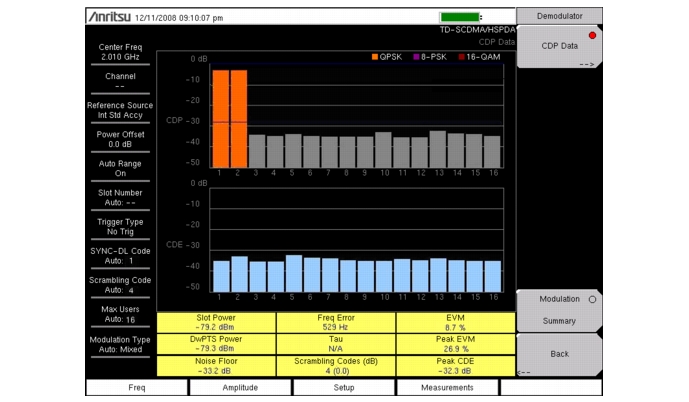The power measured in the selected slot, excluding the gap. If Slot Selection is set to Auto, then the instrument searches for an active downlink slot and uses the detected slot number for measuring slot power.
The Error Vector Magnitude (EVM) is the ratio (in percent) of the difference between the reference waveform and the measured waveform. EVM metrics are used to measure the modulation quality of a transmitter. The EVM value displayed by the instrument is the root mean square EVM of the measured downlink slot data.
Frequency error is the difference between the received center frequency and the specified center frequency. This value is linked to the external frequency reference accuracy and is typically useful only with a good external frequency reference or GPS reference.
Tau is the timing delay of the frame starting point in reference to the occurrence of a trigger. When no trigger is used, Tau values are relative to the most dominant SYNC-DL code.
The peak of the Code Domain Error (CDE) is the remnant power in the code domain after the useful signal is extracted.
The display format is Scrambling Code # (relative power in dB). A measure of the relative powers of the 4 scrambling codes (relative to Slot Power) that correspond to the detected SYNC-DL code. Only those scrambling codes with high relative power are displayed. Typically, only one scrambling code is displayed unless significant interference occurs from neighboring codes.

